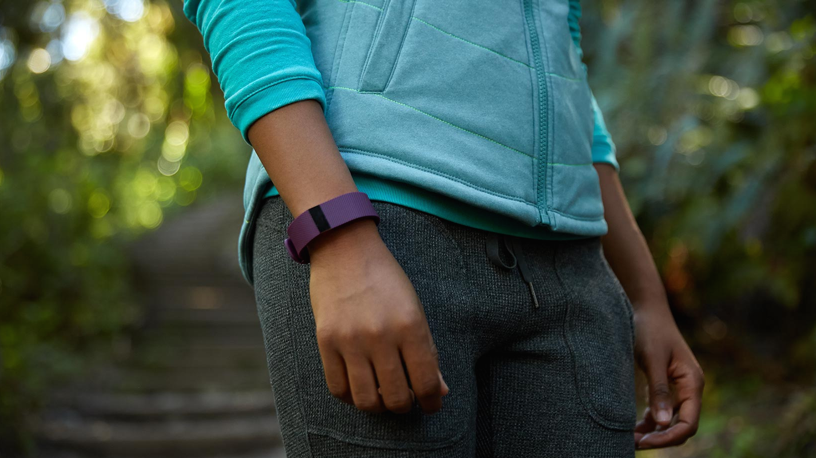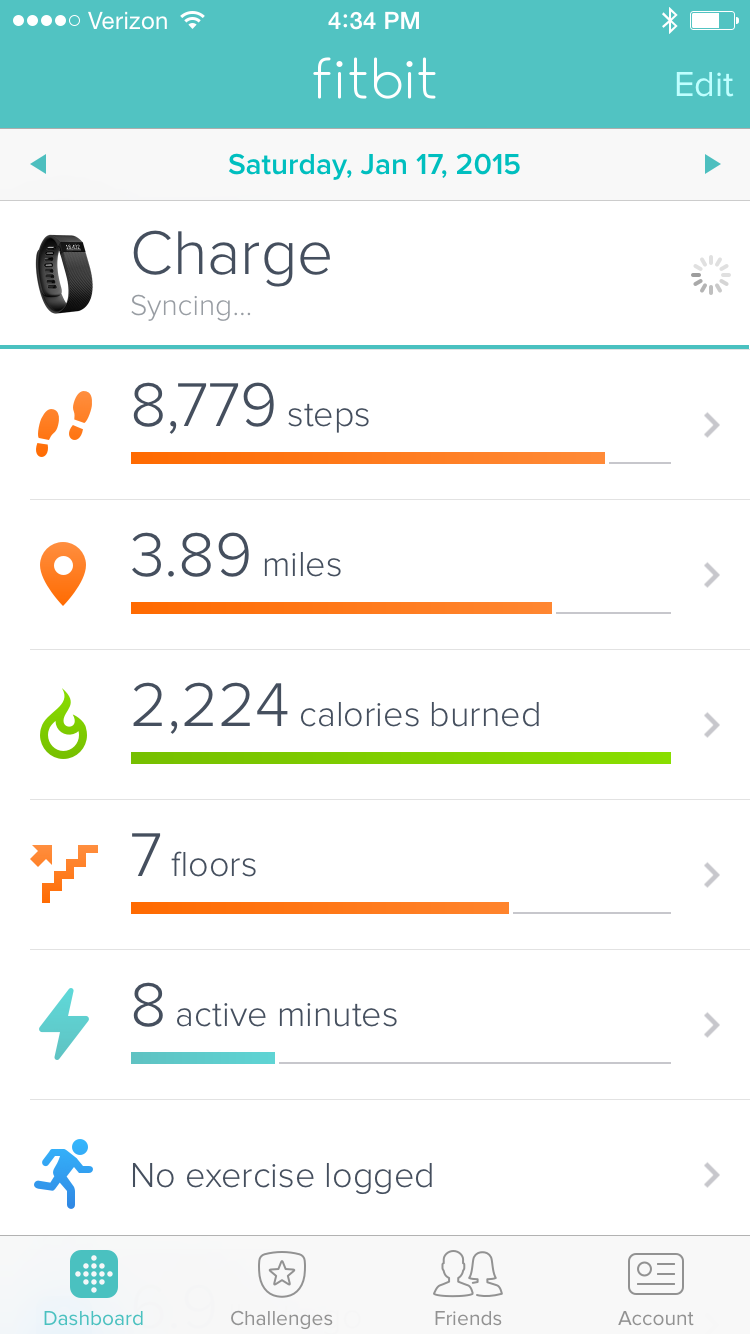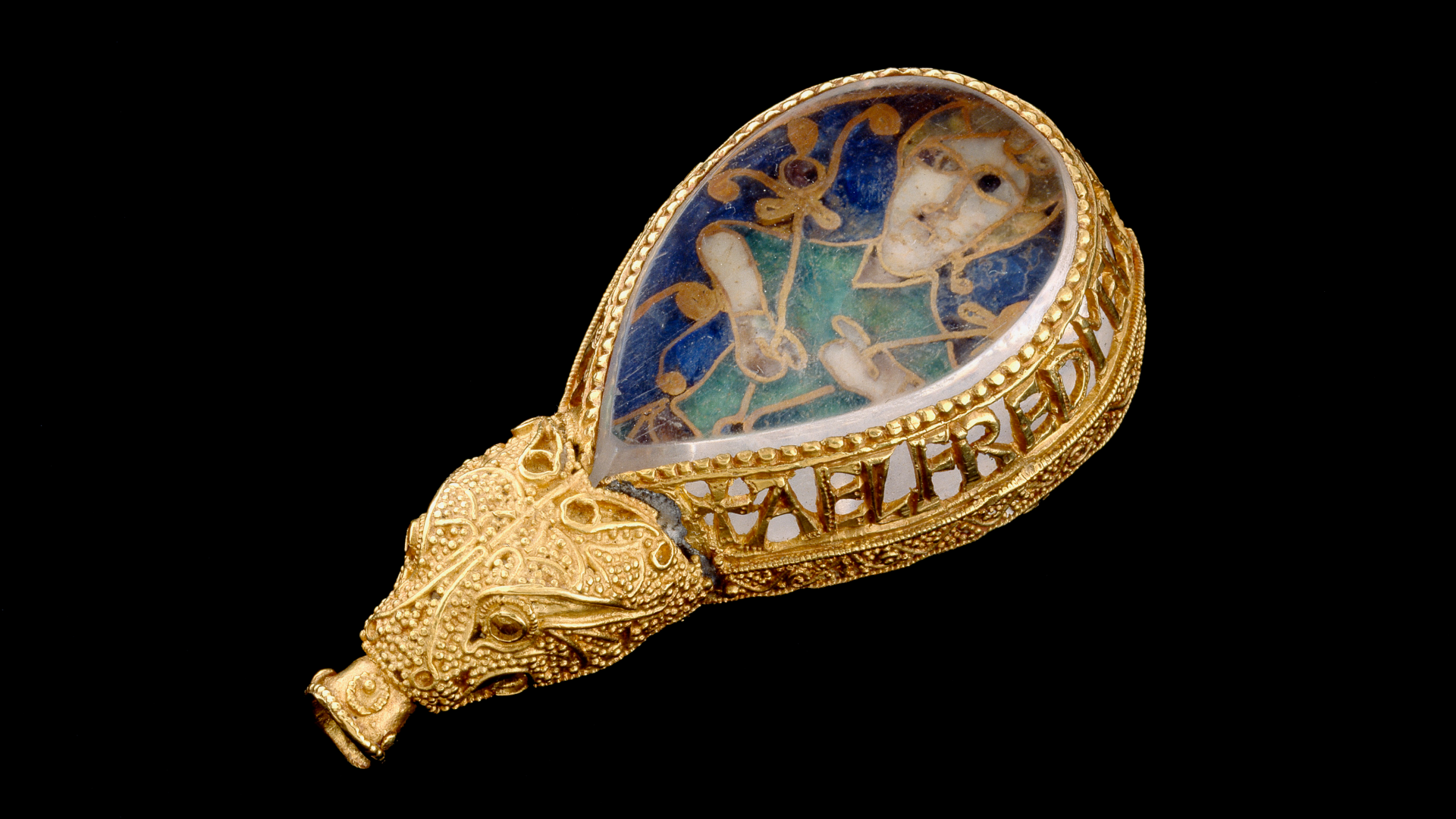Fitbit Charge: Fitness Tracker Review

The Fitbit Charge is an activity tracker that also monitors your exercise and how long you sleep, as well as displays the incoming calls you're getting on your smartphone. The tracker, which retails for $129.95, is a great tool for people trying to get fit or those interested in monitoring their daily activity. Its ability to track time spent exercising, distance traveled and calories burned also makes it a good option for experienced exercisers.
Like the company's other trackers, the Charge syncs seamlessly to the Fitbit app, but what really makes this tracker stand out is its simple and comfortable design. The Charge is the kind of tracker you can wear day and night without any discomfort. You can interact with this tracker as much or as little as you like, which sets it apart from fitness bands like Garmin's Vivosmart, which vibrates when you've been sitting too long, or Moov, which only tracks activity when you're exercising.
Overall Rating: 7.3/10
If you're looking for a fitness tracker that will monitor your daily activity and sleep patterns, then the Charge might be a good choice. This comfortable band is easy to use and also has a few convenient features, like a silent alarm and caller ID.
However, the Charge doesn’t have a heart rate monitor or GPS, making it a poor substitute for more feature-packed (and expensive) fitness trackers or sport watches. And although the Fitbit app is easy to use, it's also a bit lackluster in the quality of information it provides. If you want an in-depth analysis of your data, you'll have to shell out more money for the company's premium service.
Design/Comfort: 9/10
The Charge is worn around the wrist and comes in three sizes and four colors, so you can pick the one that fits you (and your personality) best. Like other trackers that monitor steps and calories, the Charge is shaped more like a band than a watch. But unlike its predecessor, the Flex, the new Fitbit does have a small display screen, so I could check my daily progress on my wrist without having to first sync the tracker with my phone. [Best Fitness Tracker Bands]
The display is easy to read both indoors and out, but it remains blank until you either tap the screen or press the tracker's only button. Then, the home screen displays the time of day, but you can keep pushing the button to see your other stats, like how many floors you've climbed and how many steps you've taken. Using the app, you can also choose which stats you want to appear on the tracker when you press the button, and customize the order in which you see these stats.
Get the world’s most fascinating discoveries delivered straight to your inbox.
I didn't have to do anything at all to get the Charge to track my sleep. The device automatically (and accurately) detected when I was done moving for the day — a feature I definitely appreciated. With some other trackers that monitor sleep, you have to remember to put the device in sleep mode when you hit the hay, and take it out of sleep mode when you wake up, in order for it to tally your hours of shut-eye.
The Charge is a sturdy device, and it's easy to take it on and off. It was also lightweight and comfortable enough to wear day and night for as long as I wanted. The tracker is made of a flexible elastomer material that is water-resistant and easy to clean. However, the Charge isn't waterproof, so although I could (and did) sweat on it, run in the rain with it and even splash it with water, I didn't wear it while swimming. The company also recommends taking the tracker off while bathing.
User-friendliness: 7/10
The Charge was delightfully easy to set up. I downloaded the Fitbit app on my iPhone and then created an account in the app, but you can also go to the company's website to create a username and password there, and set up a profile. Once you have an account, you can link the tracker to your smartphone or tablet via Bluetooth (that's what I did), or you can use the dongle that comes with the tracker to sync the tracker wirelessly with your computer.
Actually using the Charge is just as simple as setting it up. I have reviewed several other devices, and I was surprised by how little frustration I experienced the entire time I was reviewing this tracker. One time, it fell off my wrist because I hadn't properly secured the clasp, and it can be a little tricky to get the tracker properly cinched to your wrist. But I could say the same thing of any tracker or watch I've ever worn.
The Fitbit app has a straightforward, appealing design that makes it easy to find the information you're looking for at a glance. Every stat — from steps taken to time spent exercising — has its own display screen in the app, so you can easily access graphs, charts and calendars that let you assess your progress over time. Also in the Fitbit dashboard is a miniature picture of the Charge, flanked by an icon that tells you how much battery life you have left, which is very convenient. This tracker has a long battery life — up to 10 days. [Fitness Tracker Buying Guide: Use This Flow Chart to Pick the Right Device]
Value of information: 6/10
The Charge is similar to many other fitness bands in what information it tracks. However, unlike some other devices, it also provides information on how long you've exercised and your pace, if you use it while running. The only standout feature — one that few trackers have — is the "floors climbed" stat, which kept me informed of how many times I'd gone up and down the stairs each day. That information wasn't particularly valuable to me, but I imagine it might be useful for someone doing a stair workout (or, for Rocky).
Before I got started with the tracker, I was prompted to set goals for my daily fitness in the app. The app then tracked whether I actually met those goals, but there wasn't any information in the app about why I should be striving toward 10,000 steps a day, how much exercise was ideal or how much sleepI should aim to get every night.
People accessing the Fitbit dashboard on a Web browser can purchase the company's "premium" service, which provides in-depth analysis of your activity and sleep data, as well as suggestions on how to reach your fitness and dietary goals. But it was sort of a turnoff for me that you have to pay more ($49.99 per year) to really make sense of the data that the Charge tracks.
You can set up voice cues in the app that offer a bit of support while you're working out. The cues will help you pace yourself while you're running and let you know how much ground you've covered. I don't like to carry my phone with me on runs, so I didn't test out this feature, but it seems like it would come in handy, especially for distance runners.
The Charge that I reviewed didn't have a heart rate monitor, but Fitbit is coming out with a new Charge (the Charge HR) early this year that the company says will feature a heart rate monitor, and only costs a tad more than the Charge, at $149.95.
Enjoyment/Inspiration: 7/10
Fitbit has a history of keeping fitness tracking lighthearted and fun, and the Charge is no exception. If you let the app access your contacts, you can find friends with Fitbit accounts and invite them to participate in workout challenges with you. The "Workweek Hustle" challenge, for example, is a friendly competition to see who can walk the most steps between Monday and Friday. You can also send messages to your Fitbit friends from within the app, and share your stats with them.
When you reach your fitness goals for the day, you'll receive an email or text alert that congratulates you on your progress. However, Fitbit didn't send me any notification when I wasn't meeting my goals. I didn't mind this, but those looking for a tracker that seconds as a drill sergeant might be more interested in products like the Garmin Vivosmart or the Soleus Go, which vibrate on your wrist if you've been sitting too long.
But the Charge does have a silent alarm that vibrates to get you out of bed in the morning, and the device also vibrated when I got a call on my cellphone, and even let me know who was calling. However, I didn't really understand why this was a useful feature, since I still needed to use my phone in order to answer calls.
Editor’s Note: In February 2015, we changed the rating system we use in our fitness tracker reviews from a 5-star system to a 10-point system. Not all of our ratings were a straight conversion (i.e. 2/5 stars = 4/10 points). Instead, we adjusted some of them in order to give our readers a better idea of how these devices perform in relation to each other.
Follow Elizabeth Palermo @techEpalermo. Follow Live Science @livescience, Facebook & Google+. Original article on Live Science.




